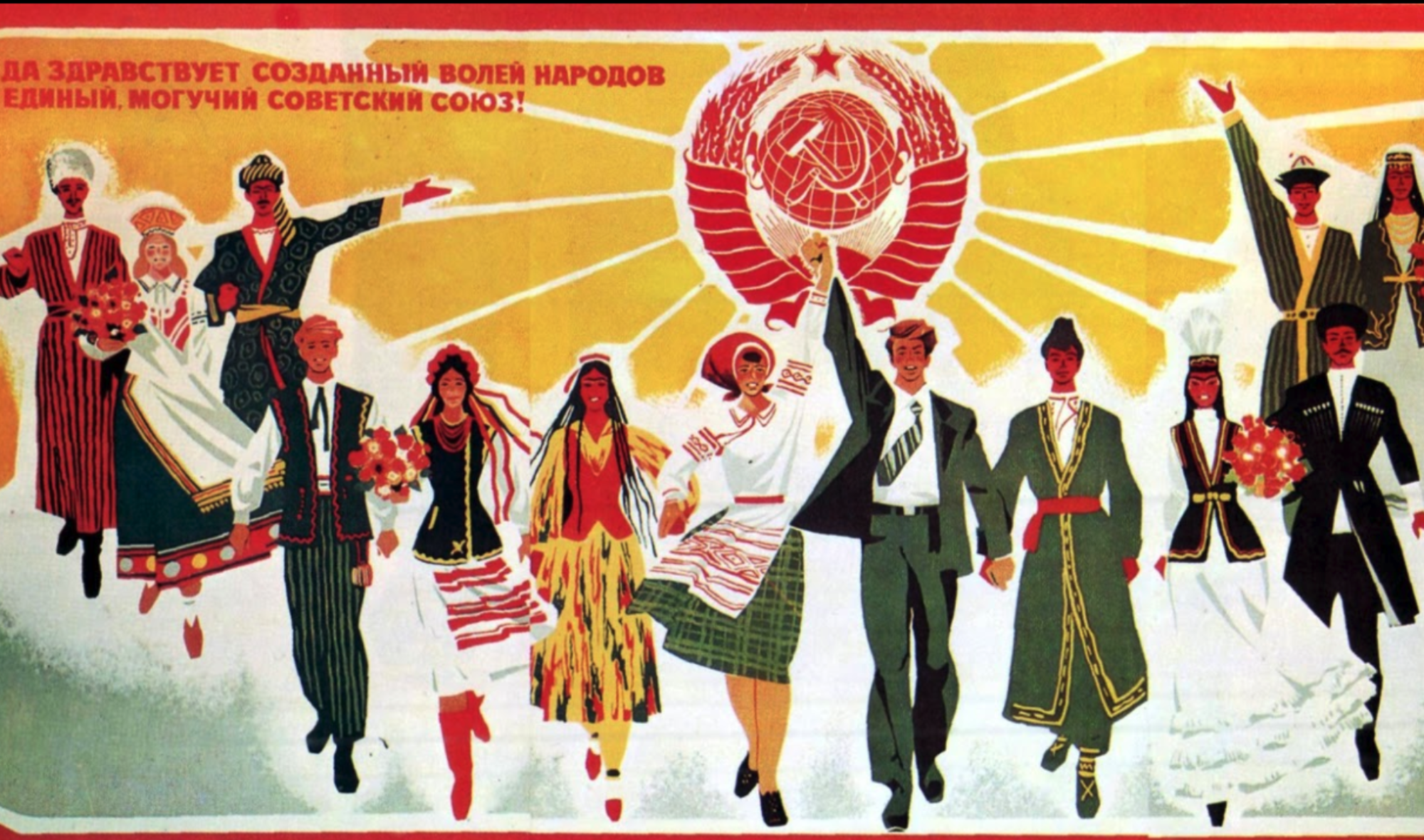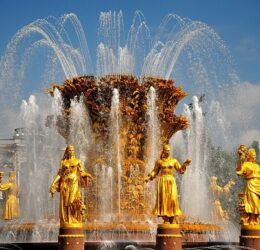After reading chapter 5 of Brigid O’Keeffe’s’ “New Soviet Gypsies: Nationality, Performance, and Selfhood in the Early Soviet Union”, I have raised some questions. Specifically, I question the overall thinking of Boris Schtienpress and how he made certain observations. For example, he focuses on gypsy women as a distinct ethnic emblem of the seeming threat posed to righteous and pure Bolshevik masculinity (O’Keeffe, 196). With his thoughts in mind, I ask what people had come to think of the male performers of the Romani arts? Furthermore, I ask what birthed such principles of misogyny rooted within Bolshevik thought? Were his critiques of the arts simply propaganda like statements regarding the values in which Bolsheviks expected women to adhere in the Soviet Union?
The question of Nationality
In this reading, I found a lot of similarities between the Gypsies’ question of their national identity and the question of national identity in the Kresy. It seemed like both the Gypsies and the Ukrainian, Polish, and Germans in the Kresy were both comfortable to call themselves by their own labels until the Soviet government tried to force each group into a certain box for the census and resettlement. However, there were some differences within the decision to push the Gypsies into one group, that mirrored what happened to the Jewish population. What made the question of nationality for the Gypsies different from the ones of Ukrainian, Polish, or German identities?
A Contradictory Policy
I found this reading very interesting. Given the long history of anti-Semitism in both Russia and Europe as a whole, I went into this excerpt wondering how exactly the Soviets would address the Jewish people of Russia. It’s not exactly a surprise that the Stalinist government handled the issue by attempting the creation of a Jewish community in their image, out in the Far East. The thing I found most interesting was the contrast between the material and the cultural effort that the Soviets put into this region. The Soviet government did a great deal to promote Soviet Jewish culture both in the region and abroad (in a way that they never did in the Kresy), while neglecting the actual physical needs of the inhabitants. As such, this begs the question: was this a legitimate effort to help the Soviet Jewish community or a simple propaganda move? And if it was to be a sort of “model community”, why wasn’t more effort put forward to improve the material conditions of the inhabitants?
Can Judaism be “National in Form and Socialist in Content”?
Sydney Kightlinger
On page 70, we are presented a photo of an elementary school primer from 1936 that is written in Yiddish. Lenin is at the top of the page and the words read: “Vladimir Ilich Lenin / Lenin is our leader, / Our teacher, our friend / We do as Lenin teaches us, / All working people know and love Lenin.” This is supposed to exemplify the Soviet Government’s commitment to “national in form and socialist in content.” I believe message is conveyed fairly well, but do we think that it is a representation of Jewishness? The commentary beneath this argues that “Yiddish was an insufficient basis on which to maintain one’s identity.” Going back to conversations we had in the first two weeks, do you think that the J.A.R was an actually celebrated Soviet Jewish region or an area settled by Jewish people that had to give up major parts of the Jewish faith in order to comply with Soviet policy?
The Plan
Reading through today’s selection in “Stalin’s Forgotten Zion,” I noticed that we seem to get a full picture of Stalin’s plan concerning the diverse nationalities in the Soviet Union over time with the Jews as the example. Both Lenin and Stalin seemed to have believed that religion and national identity would eventually fade away completely as the Soviet culture became more dominant. In the reading, we see the Kremlin start out by “respecting” the Jews to completely forgetting all about the JAR by the time we reach page 71. Instead of the Jewish nationality fading away, the government seems to just close its eyes and pretend it doesn’t exist. This seems to me like the perfect example of why Lenin and Stalin were completely wrong. Culture and the sense of nation do not just disappear. It seems to me that the Soviet government just uses the idea of the JAR as a public relations tool for the rest of the world. Does anyone else see that too, or am I delusional on a Sunday night? We know the Soviets did not actually care what happened to the Jews since Weinberg points out that the government heavily promoted the program, but did not actually provide any assistance or prepare the settlers for the harsh conditions of their new home. Is this evidence that Stalin knew a nationality could only be suppressed, not eliminated?
Anti-Semitism vs Anti-Religion
In “Stalin’s Forgotten Zion”, there is quite a bit of discussion about the Russification of Jewish people in the J.A.R. By the late stages of the Soviet Union, there were barely any bits of Judaism left: no schools taught Yiddish, there were no celebrations of festivals or holidays, and even the way they dressed had been Russified. It was nearly a complete loss of culture. While it was not abnormal for the Soviet Union to be so against religion, the Jewish population was treated especially poorly by the government by forcing them into one area and dismantling their culture. Do you think that this erasure of Jewish culture was because the Soviet Union was so anti-religion? Or, do you think it could have been because of the historical anti-semitism seen throughout Europe since the early ages?
Discriminatory Nationalism
In chapter 8 of A Biography of No Place, Radical Hierarchies, Brown discusses the result of the German authorities entering the borderlands. She outlines Professor Karl Stumpp’s illustration of German peoples in the borderlands. He is pretty upset seeing how the German people are living. He states, “‘If they didn’t want to perish, they had to knuckle under and swallow the insults or go to cities and blend in, obscuring the traces of their former existence so as not to appear as German'” (Brown, 194). Thus an interesting and maddening dichotomy arises, where there are two governments doing deplorable actions against different groups of people based on ethnicity, religion, etc.- yet, Stumpp can still be disgusted by the treatment of fellow Germans in a different “nation”. Furthermore, Brown discusses how Stumpp ignores the other nationalities facing these conflicts in the USSR, and only focuses on the atrocities against Germans. Thus, it makes me wonder how both of these “nations” can exist at the same time whilst condemning the other? Moreover, Brown describes the process in which the German authorities organized the German Soviets, in a way that focuses on physical appearance and a strange
A Biography of No Place Chapter 6
Chapter 6 was an Interesting subject to read, but also very disturbing when reading it. I found this chapter extremely interesting cause, when studying WWII or Pre War Soviet Union very few academic books mention the Great Purge. What makes this topic so unique is, why did the Soviet Union perform Genocide to Oppress their people? This section gives a clear cut explanation of who the regime went after (Leon Trotsky, Trotskyist, Wealthy Peasants, and even counter revolution minorities and Nationalities). I love in this chapter how Kate Brown went into depth on how the Soviet Union went through records, geography of National Identified groups, and also of why these revolutionist in their eyes “to be dealt with”. (To conclude, I ponder as to why this subject of the Great Purge was never discussed in textbooks? The Nazi party conducted Genocide during the same era both were conducted for different reasons one over religion and one over political views). Lastly, did the Soviet Union see this Great Purge as the best option and was this the right move for them to make in order to succeed in the future?
The Great Purges
The causes for arrests The Great Purges from 1937-39 seem to go from targeting political resistance to persecuting minorities deemed as threatening to the state. Brown describes the ‘album’ method in which the NKVD searched through “records from schools, collective farms, party cells, labor unions and military service,” which identified people by their nationality, in order to find suitable candidates for arrest. (Brown, 158). Brown later explains how the USSR weakened its ideological base by the massive arrests under false pretense (Brown, 167). However, the USSR was able to accomplish its goals of consolidation power and creating fixed national identities. My question is did the USSR hurt itself more than it benefited from the oppression of national minorities and what Brown says Stalin called ‘spy mania,’ or did the purges help the USSR more in the long run?
From Balytskyi to Leplevskyi
When reading the beginning of chapter 6 in “A Biography of No Place” by Kate Brown, the author talks about the change in power for the NKVD Chief position going from Balytskyi to Israel Leplevskyi. In this exchange, Brown mentions that Leplevskyi was exiled after spreading rumors that his boss’s success was due to his efforts (Brown, 156). Leplevskyi swore that he would return and did only to accuse Balytskyi and his bureau of inactivity in fighting the enemy. Leplevskyi went on to replace Balytskyi and conduct major efforts in the Great Purges from 1937 to 1939 (Brown, 158). This includes arresting just about anybody with a Polish connection, to which Leplevskyi had never questioned. He soon after asked to be able to arrest more people, knowing he couldn’t satisfy such a ludicrous request. my question is whether or not things would have been off if Pelevskyi had never replaced Balytskyi? Was the diligent tenor of terror better than that of a complacent man like Balytskyi?

